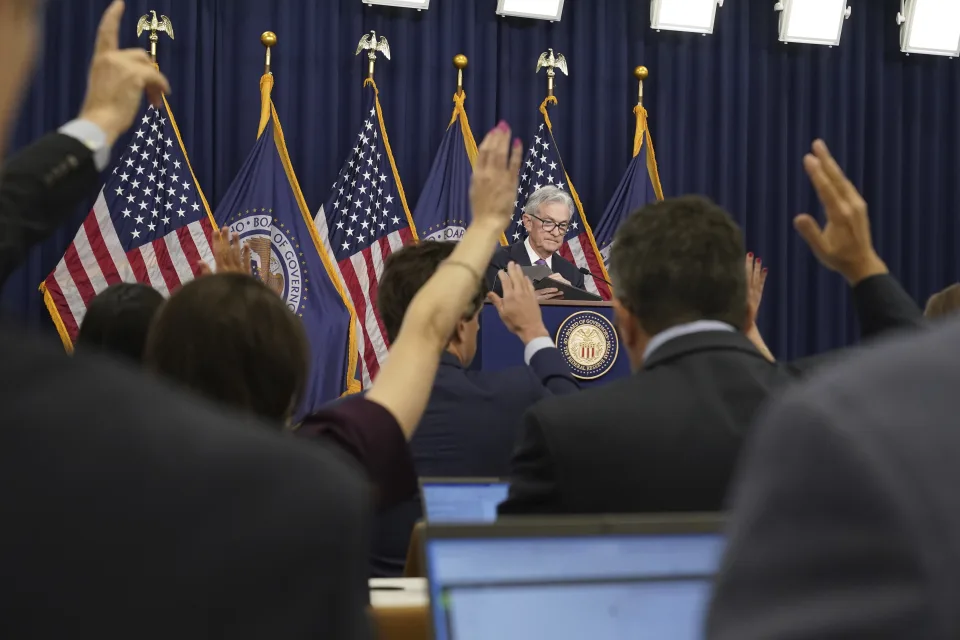
Stocks were crushed following Wednesday’s message from the Federal Reserve that interest rates will remain higher for longer than investors initially thought.
The S&P 500 fell more than 2% in a two-day span and the yield on the benchmark 10-year Treasury hit its highest level in 15 years. In total for the week, data from Bank of America showed investors dumped equities at their highest pace since December 2022.
But that reaction might be overdone according to Fundstrat’s head of research Tom Lee.
“The market had an overly hawkish reaction to the FOMC meeting,” Lee said in a video for clients after the market close on Thursday.
Lee disagrees with one of the main factors driving the market action. The Federal Reserve’s updated Summary of Economic Projections (SEP) released Wednesday showed a bias toward one more interest rate hike this year and revealed the Fed now sees interest rates remaining higher than the central bank initially thought in both 2024 and 2025.
Lee doesn’t see this as a major issue, though, and said higher rates for a more sustained period in the Fed’s forecast makes sense given the Fed’s boost to its outlook for Gross Domestic Product (GDP).
Fed Chair Jerome Powell noted during his press conference that economic growth — which the Fed now sees hitting 2.1% this year, up from its 1% increase in June — would be the driver for another rate hike, not inflation.
“We’ve seen inflation be more persistent over the course of the past year, but I wouldn’t say that’s something that’s appeared in the recent data,” Powell said. “It’s more about stronger economic activity, I would say. So if I had to attribute one thing, again, we’re picking medians here and trying to attribute one explanation, but I think broadly stronger economic activity means we have to do more with rates.”
To Lee, the marriage of higher interest rates and higher GDP not only makes sense, but could mean higher price-to-earnings ratios as the economy expands. Higher P/E ratios would then likely lead to higher stock valuations.
“A hawkish take would be inflation persistence went up and therefore Fed funds needs to stay high,” Lee wrote in a Friday note to clients.
But, as Lee notes, the Fed’s projections don’t foresee an increase in inflation.
Lee also highlights that the projections themselves are just those — projections — and are often subject to change by the Fed. For instance, just three months ago the Fed saw 0.5 percentage points more worth of rate cuts in both 2024 and 2025 than it did in its most recent forecast released Wednesday. Despite the market reaction, Powell himself sent a similar warning about the SEP throughout his press conference.
“The SEP is not a plan that is negotiated or discussed, really, as a plan,” Powell said. “It’s accumulation, really, and what you see are the medians … So I wouldn’t want to bestow upon it the idea that it’s really a plan. But what it reflects, though, is that economic activity has been stronger than we expected, stronger than I think everyone expected.”
Higher rates on Treasury yields don’t overly concern Lee either. On Friday, the yield on the 10-year Treasury notes hovered around 4.4%. Lee pointed out that on average when the yield on the 10-year Treasury notes falls between 3.5% and 5.5% the average price-to-earnings ratio on the S&P 500 is about 20. A price-to-earnings ratio of about 20 would be in line with the P/E from 2019, per Lee, and could move higher from there.
“I don’t think this rise in yields is a thesis killer,” Lee said in the video. “Obviously it’s a headwind for stocks. I’d like to see yields come down but again I think the sell-off in the last couple of days is an overreaction.”
Lee’s final point in his most recent note centers around seasonality. September is a well-known bad month for stocks. But Lee says exiting that “seasonal weakness” could be a tailwind for stocks. Carson Group’s chief market strategist, Ryan Detrick, agrees with Lee.
The last three times when the S&P 500 fell by more than 1% in both August and September, the benchmark index rose at least 8% in October.
“As bad as things feel,” Detrick wrote on X, “don’t lose faith just yet.”





























